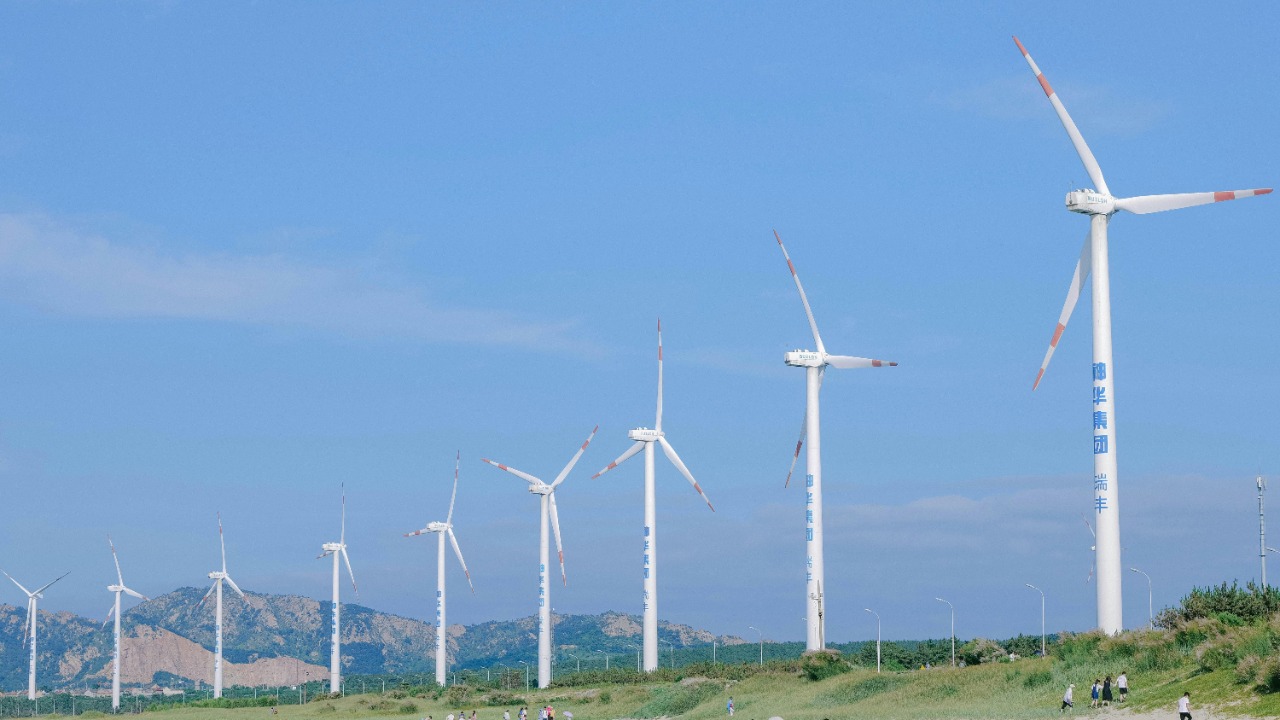
China is embarking on a groundbreaking project to develop the world’s largest 50 MW floating wind turbine, designed to withstand the severe conditions of typhoon-prone regions. This ambitious initiative, featuring a twin-headed design, aims to enhance both stability and power output in challenging marine environments. By pushing the boundaries of offshore renewable energy, China is positioning itself at the forefront of large-scale floating wind technology, potentially reshaping global clean energy production.
Project Announcement and Scale
The announcement of China’s plan to develop this massive 50 MW floating wind turbine marks a significant milestone in the evolution of offshore wind technology. This project, unveiled on October 21, 2025, sets a new benchmark in terms of scale and ambition. The turbine’s capacity of exactly 50 MW surpasses current global standards for floating wind technology, highlighting China’s commitment to advancing renewable energy solutions. This development is particularly focused on regions susceptible to typhoons, underscoring the project’s strategic importance in enhancing energy resilience in such areas.
By targeting typhoon-prone regions, the project not only addresses the immediate energy needs of these areas but also demonstrates China’s proactive approach to integrating renewable energy into its national infrastructure. The scale of this project is unprecedented, with the 50 MW capacity setting a new standard for what is achievable in floating wind technology. This initiative is expected to pave the way for similar projects worldwide, as countries look to harness offshore wind energy in increasingly challenging environments.
Twin-Headed Design Innovations
The twin-headed configuration of the 50 MW floating wind turbine represents a significant innovation in wind energy technology. This design distributes wind capture across two rotors, enhancing efficiency and stability. By employing a twin-headed setup, the turbine can better manage the dynamic forces exerted by strong winds, particularly in the volatile conditions of typhoon-prone regions. This innovative approach not only maximizes energy capture but also ensures the structural integrity of the turbine under extreme weather conditions.
Stability is a critical factor for floating wind turbines, and the twin-headed design plays a crucial role in maintaining balance and performance. The engineering behind this configuration allows the turbine to handle the unpredictable and often harsh marine environment, making it a robust solution for offshore energy production. The integration of this feature as a core element of the turbine’s design underscores its status as the world’s largest in its category, setting a new precedent for future developments in the field.
Typhoon Resistance Features
Engineering the turbine to withstand harsh typhoons involves incorporating reinforced structural elements that ensure its durability in high-wind zones. The design includes advanced dynamic positioning systems that help maintain stability during storms, a crucial adaptation for floating operations in areas frequently affected by typhoons. These features are essential for the turbine’s reliability and operational efficiency, particularly in China’s coastal regions where typhoons are a common occurrence.
The ability to endure such extreme weather conditions not only enhances the turbine’s operational lifespan but also ensures a consistent energy supply during adverse weather events. This resilience is vital for maintaining energy security in regions vulnerable to natural disasters. By focusing on typhoon resistance, the project highlights the importance of designing renewable energy solutions that can withstand the challenges posed by climate change and extreme weather patterns.
Implications for Global Wind Energy
The development of the 50 MW floating wind turbine has significant implications for scaling up renewable energy in typhoon-affected regions worldwide. As the largest of its kind, this turbine sets a new standard for offshore wind projects, encouraging other countries to explore similar technologies. China’s leadership in this area could influence international efforts to expand offshore wind capacity, particularly in regions facing similar environmental challenges.
This project is not only a testament to China’s engineering prowess but also a critical step toward achieving sustainable energy goals in the face of climate change. By advancing such innovative solutions, China is contributing to the global transition toward cleaner energy sources, demonstrating the potential for large-scale renewable projects to meet the world’s growing energy demands. The October 21, 2025 announcement of this project marks a pivotal moment in the pursuit of sustainable energy solutions, offering a model for future developments in the sector.